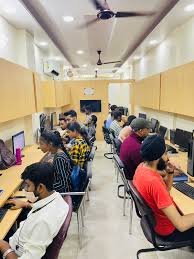The Jagannath Rath Yatra, one of the most celebrated Hindu festivals, took place on 07-07-2024, and it was a spectacle to behold. This annual event, marked by intense devotion and grandeur, commemorates the journey of Lord Jagannath, Lord Balabhadra, and Devi Subhadra from their temple to the Gundicha Temple. The 2024 Yatra was particularly significant due to the immense scale of participation and the meticulous preparations that went into making it a memorable event.
History and Origins
The Jagannath Rath Yatra traces its origins back to ancient times, with roots deeply embedded in Hindu mythology. It is believed that the festival began in the 12th century when the Jagannath Temple was established in Puri, Odisha. Legends narrate that the deities themselves expressed a desire to visit their birthplace once a year, which led to the inception of this grand procession. The Yatra is filled with symbolic gestures and rituals that highlight the rich cultural heritage of India.
Preparations for the Yatra
Preparations for the Rath Yatra start months in advance. The community comes together in a spirit of cooperation and devotion to ensure every detail is perfect. Carpenters, artists, and volunteers work tirelessly to construct and decorate the chariots. The entire town of Puri transforms into a vibrant and bustling hub of activity, with streets adorned with colorful lights and decorations.
The Chariots
The chariots used in the Rath Yatra are massive and intricately designed. Each chariot is dedicated to one of the deities. Lord Jagannath’s chariot, Nandighosa, is a towering structure with 16 wheels. Lord Balabhadra’s chariot, Taladhwaja, and Devi Subhadra’s chariot, Darpadalana, are equally impressive. These chariots are not just vehicles; they symbolize the journey of the soul towards salvation.
Deities of the Rath Yatra
Lord Jagannath
Lord Jagannath, the presiding deity, is an incarnation of Lord Vishnu. He is depicted with a broad smile and large, expressive eyes, symbolizing universal love and compassion.
Lord Balabhadra
Lord Balabhadra, the elder brother of Lord Jagannath, represents strength and valor. His presence in the Yatra signifies the protection of the devotees.
Devi Subhadra
Devi Subhadra, the sister of the two lords, embodies purity and auspiciousness. Her inclusion in the Yatra highlights the familial bond and unity.
The Journey Begins
The Rath Yatra begins from the Jagannath Temple and proceeds towards the Gundicha Temple, covering a distance of approximately 3 kilometers. The procession moves through key locations such as Bada Danda, attracting thousands of devotees who throng the streets to catch a glimpse of the deities.
Rituals and Ceremonies
The Rath Yatra is replete with rituals that add to its spiritual significance. Before the journey begins, the deities are adorned in ceremonial attire and ornaments. The ‘Pahandi’ ceremony, where the deities are carried out of the temple, marks the beginning of the Yatra. Another significant ritual is the ‘Chhera Pahanra,’ where the Gajapati King sweeps the chariot platforms, symbolizing humility before the divine.
Participation and Devotees
The Rath Yatra is a massive event that sees participation from locals and pilgrims worldwide. Devotees believe that pulling the chariots earns them divine blessings and helps them attain salvation. The atmosphere is charged with chants of “Jai Jagannath,” and the air is filled with the fragrance of flowers and incense.
Cultural Significance
The Rath Yatra has a profound impact on the local culture. It is not just a religious event but a celebration of art, music, and dance. Traditional Odissi performances and folk music add a festive charm to the Yatra, showcasing the rich cultural tapestry of Odisha.
Economic Impact
The Rath Yatra also has a significant economic impact on the region. It boosts the local economy, with numerous vendors, artisans, and businesses benefiting from the influx of tourists. The hospitality industry, in particular, sees a surge in activity, with hotels and guesthouses operating at full capacity.
Security Measures
Given the scale of the event, security is a top priority. Comprehensive measures are implemented to ensure the safety of the devotees. The local police, along with volunteers, manage crowd control and emergency services, ensuring the Yatra proceeds smoothly.
Environmental Considerations
In recent years, there has been a strong emphasis on making the Rath Yatra eco-friendly. Measures such as using biodegradable materials, waste management systems, and awareness campaigns are implemented to minimize the environmental impact of the festival.
Media Coverage
The Jagannath Rath Yatra garners extensive media coverage, with live broadcasts and social media updates keeping the world connected to the event. The widespread coverage helps in spreading the message of devotion and cultural heritage far and wide.
Personal Experiences
The Yatra is a deeply personal experience for many. Stories of miracles, profound spiritual experiences, and heartfelt devotion are shared by participants. Testimonials from visitors often highlight the overwhelming sense of community and the divine presence felt during the Yatra.
Conclusion
The Jagannath Rath Yatra of 07-07-2024 was a testament to the enduring power of faith and community. It brought together people from all walks of life in a shared expression of devotion and celebration. The Yatra not only reinforced cultural and spiritual bonds but also showcased the vibrant and diverse heritage of India.
FAQs
Q1: What is the significance of the Jagannath Rath Yatra?
The Jagannath Rath Yatra symbolizes the journey of Lord Jagannath, Lord Balabhadra, and Devi Subhadra to their birthplace, representing the soul’s journey towards salvation.
Q2: How are the chariots for the Rath Yatra constructed?
The chariots are constructed using traditional methods, with skilled artisans and volunteers working for months to create these massive and intricately designed vehicles.
Q3: What are some key rituals associated with the Rath Yatra?
Key rituals include the ‘Pahandi’ ceremony, where the deities are carried out of the temple, and the ‘Chhera Pahanra,’ where the Gajapati King sweeps the chariot platforms.
Q4: How does the Rath Yatra impact the local economy?
The Yatra boosts the local economy through increased tourism, benefiting vendors, artisans, and the hospitality industry.
Q5: What measures are taken to ensure the environmental sustainability of the Rath Yatra?
Eco-friendly practices, such as using biodegradable materials and implementing waste management systems, are adopted to minimize the environmental impact of the festival.




